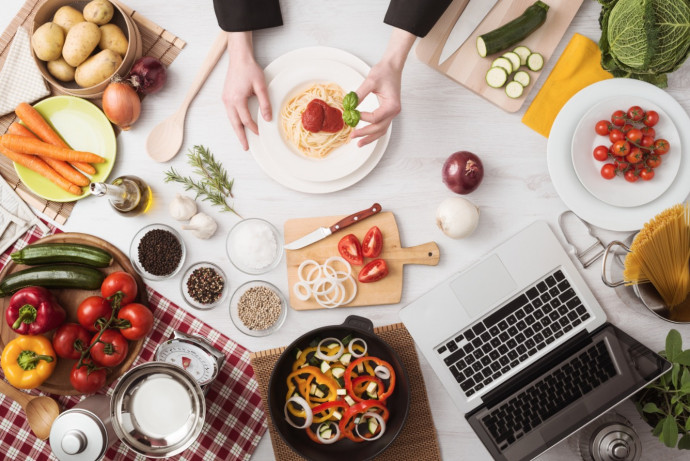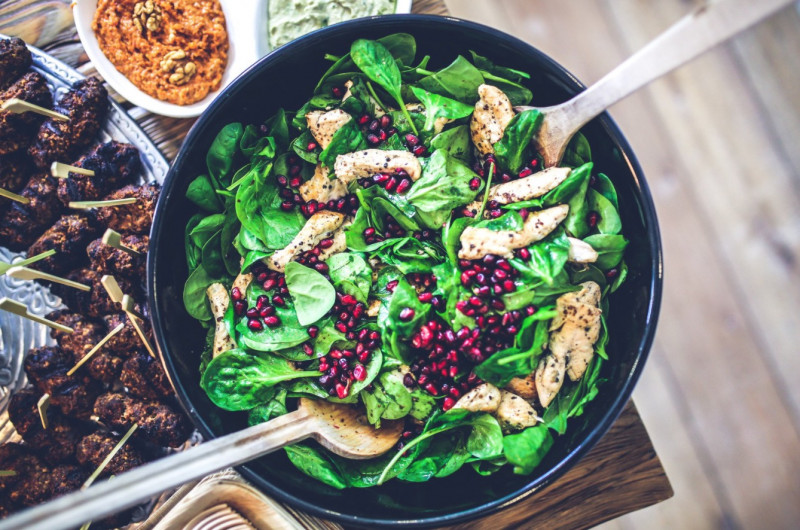7 Daily Kitchen Hacks

Whether you're a novice or a professional chef when it comes to cooking, you'll benefit from these time-saving kitchen hacks. Discover these 7 handy kitchen tips and tricks for anyone who wants to simplify their time in the kitchen while cooking. These quick and effective kitchen hacks are hopefully going to make your time in the kitchen just a little bit happier!

1. Mess-free monitoring
When frying foods, it’s important to keep an eye on the temperature of the oil. But if you use a splatter screen, it can get in the way of hooking a thermometer on the edge of the pot. Here’s a solution: poke a small hole at the edge of the screen and slip the arm of the thermometer through the hole. Now it’s possible to prevent splatter and monitor the oil temperature at the same time.
2. Protecting hands from pots
Most instant-read thermometers come in a protective plastic sleeve with a metal clip (for clipping to aprons) that forms a loop at the very top. Use this clip and plastic sleeve to distance your hand from hot pots when taking a temperature.
1. Slide the probe end of the thermometer into the loop at the tip of the clip.
2. Hold the end of the plastic sleeve to keep the thermometer upright, and then lower the probe into the food.
3. Getting a read on shallow liquids
Recipes with delicate or heat-sensitive ingredients often indicate the temperature at which the mixture should be taken off the heat. If you are cooking a small quantity, use this technique to get an accurate reading with an instant-read thermometer: tilt the pan so that the liquid collects on one side, creating enough depth to get an accurate reading.
4. Bigger thermometer footprint
If you have problems with your oven thermometer falling through the bars of your oven rack, try folding a sheet of aluminum foil around the base of the thermometer a few times to create a bigger “foot” so the device can sit on the rack without falling off.
5. Double-checking your oven
A properly calibrated oven is essential for ensuring consistent cooking results. If you don’t have an oven thermometer, here’s an easy method to test for accuracy using an instant-read thermometer. Set an oven rack to the middle position and heat your oven to 350 degrees for at least 30 minutes. Fill an ovenproof glass 2-cup measure with 1 cup of water. Using an instant-read thermometer, check that the water is exactly 70 degrees, adjusting the temperature as necessary. Place the cup in the center of the rack and close the oven door. After 15 minutes, remove the cup and insert the instant-read thermometer, making sure to swirl the thermometer around in the water to even out any hot spots. If your oven is properly calibrated, the water should be at 150 degrees (plus or minus 2 degrees). If the water is not at 150 degrees, then your oven is running too hot or too cold and needs to be adjusted accordingly. (Note: to avoid shattering the glass cup, allow the water to cool before pouring it out.)
6. Retrieving an oven thermometer
Oven thermometers are apt to fall off the rack and onto the oven floor. When this happens, use a pair of tongs to retrieve or reposition the thermometer. Tongs keep your hands a safe distance away from the hot rack while enabling dexterity that’s not possible with your hand clad in an oven mitt.
7. Cool calibration
It’s important to calibrate your kitchen thermometer once in a while to make sure you’re getting accurate readings. For dial-face thermometers, use the following technique.
1. Immerse the thermometer in a slurry of ice water (boiling temperature calibration is not necessary), being careful not to touch the container.
2. Using a pair of needle-nose pliers, adjust the screw on the underside of the dial face until it read 32 degrees.
